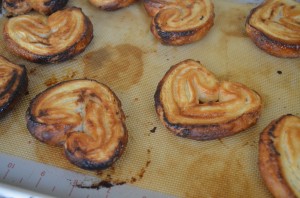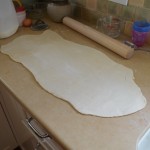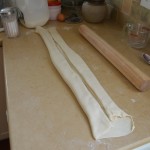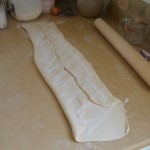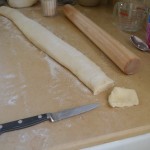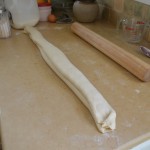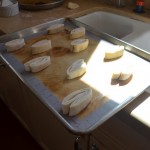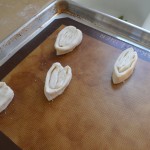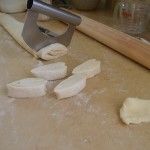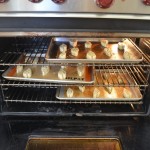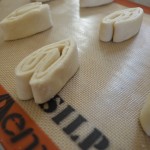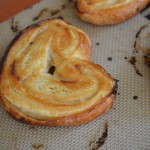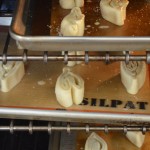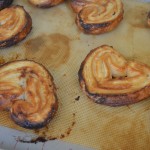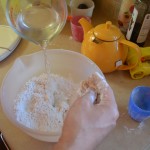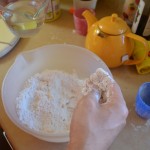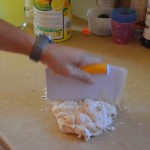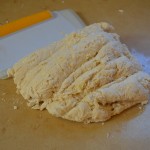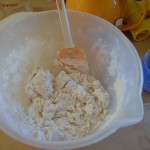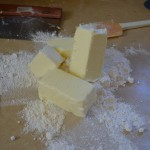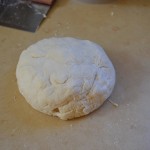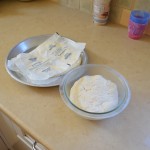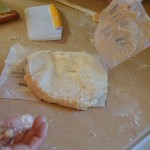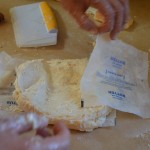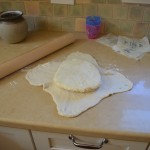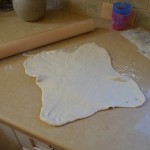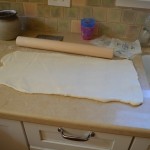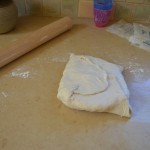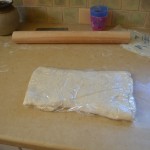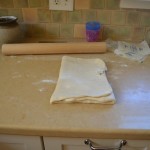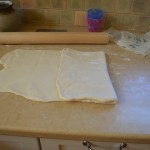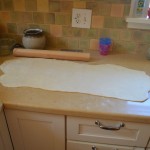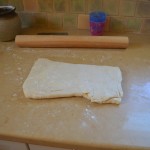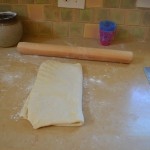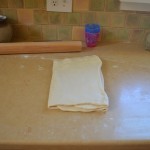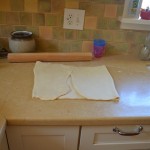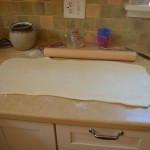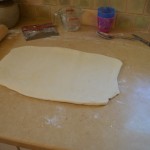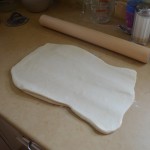Very few people make their own puff pastry thinking it’s too difficult.
It’s not. It takes some time but it’s not difficult. And most of the time is waiting for the dough to cool. Basically, it’s a layering of butter in a flour/water dough. When it cooks, the water in the butter steams up and that’s what makes the dough rise.
Ingredients:
- 1 pound of unsalted butter at room temperature
- 19 ounces of flour
- 5 grams of salt
- 1 cup of water
The dough is in two parts: mostly water and flour and a little bit of butter (“detrempe”) on one side and mostly butter with a little bit of flour on the other.
Start by pouring 15 ounces of flour on a work surface or in a large mixing bowl. Add the salt and two ounces of butter and mix with a spatula. then add the water little by little and mix it. try and mix it gently with the spatula or a dough cutter instead of your hands so as not to knead it otherwise it will become too elastic. When the detrempe is ready, cover and put it in the fridge to rest.
Mix the rest of the butter with 4 ounces of flour. it makes a sticky mess. use the wax paper the butter came in to shape the butter in a flat rectangular shape. put it in the fridge.
After a couple of hours, take the detrempe out and roll it in the shape of a cross with a large square and 4 thinner arms. Put the butter in the middle and cover with the four arms.
The consistency of the detrempe and butter should be similar which will make rolling possible.
You are now going to do what is called turns. A turn is when you roll the dough down then fold it in thirds: fold the left third then right third over the middle. So you go from one square of dough to a 3×1 rectangle back to a square of dough. The dough is then turned 90 degrees either side and the process is repeated.
Puff pastry calls usually for 4 to 6 turns. Some people fold like a book: make a 4×1 rectangle, then fold each side toward the middle and finally fold in two. This is known as a turn and a half.
You cannot do 6 turns one after the other, usually after rolling and folding twice, then dough needs to be set in the fridge to rest and cool down for an hour or so.
